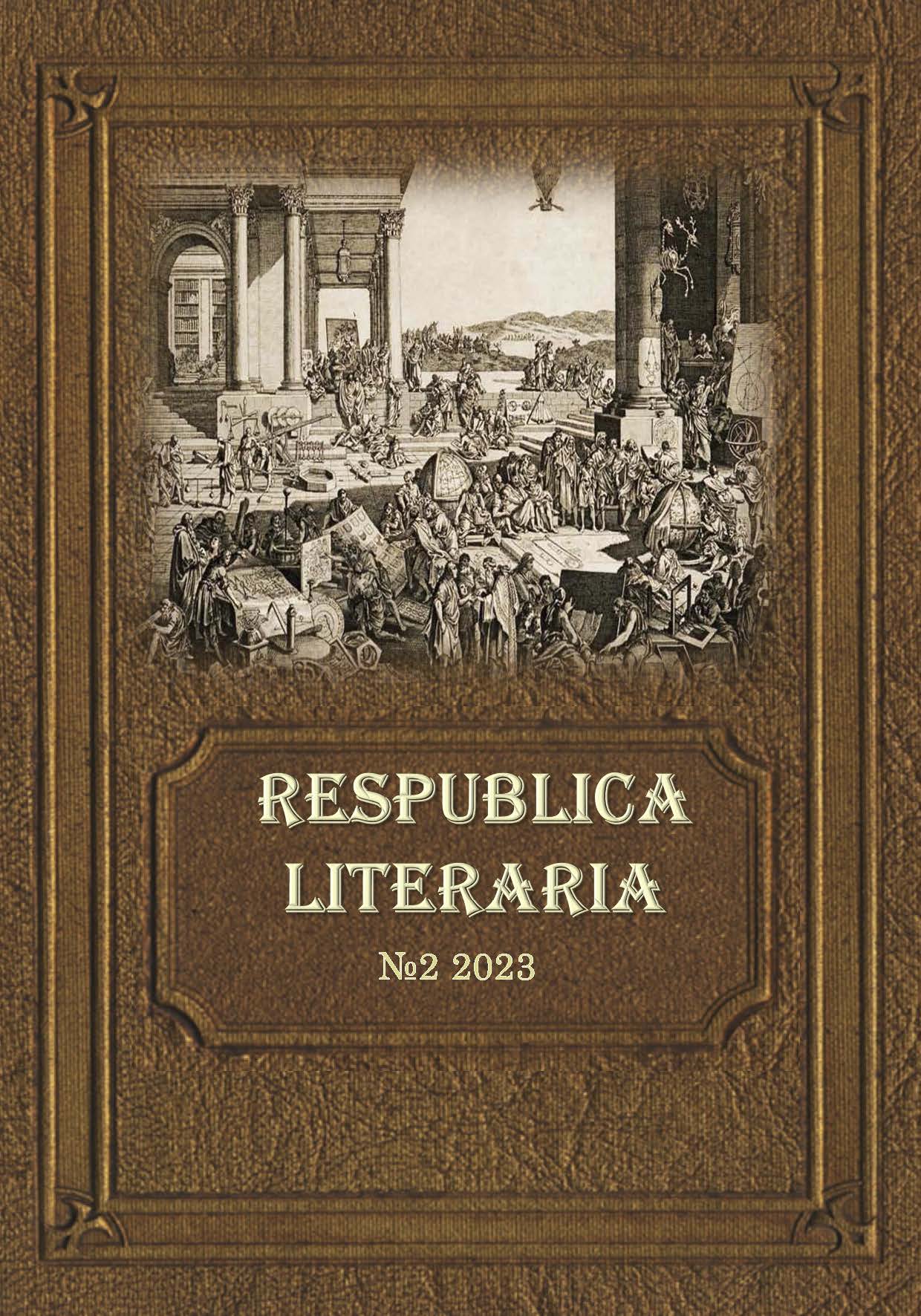Preservation of the Demographic Potential of Russian Regions
DOI:
https://doi.org/10.47850/RL.2023.4.2.35-47Keywords:
natural population growth, population dynamics, demographic potential, regions of Russia, factors and determinantsAbstract
This article is the first in a series of works by the authors on the factors determining the preservation of demographic potential by the regions of Russia. An attempt is made to perform a comparative analysis of the dynamics of natural population growth in the regions of Russia from 2002 to 2022 and their groupings based on the results of the dynamics assessment. As a result, a group of regions was identified that retained positive natural population growth. The factors that caused this trend require additional consideration both regarding the ethno-cultural specifics of the formation of the life cycle by young people, sustainable values that support families and the birth of children and migration influx, and socio-economic measures taken at the regional level.
References
Демографические вызовы России. Экспертно-аналитический доклад. (2017). М. Центр стратегических разработок. 71 с.
Demographic Challenges of Russia. Expert and Analytical Report. (2017). Moscow. 71 p.
(In Russ.)
Демографический ежегодник России. 2017: стат. сб. Росстат. (2017). М. [Электронный ресурс]. Федеральная служба государственной статистики. URL: https://rosstat.gov.ru/storage/mediabank/demo17.pdf (дата обращения: 10.05.2023).
Demographic Yearbook of Russia. 2017. Stat. Collection Rosstat. (2017). Moscow. [Online]. Federal State Statistics Service. Available at: https://gks.ru/free_doc/doc_2017/demo17.pdf (Accessed: 10 May 2023). (In Russ.)
Демографический ежегодник России. 2019: стат. сб. Росстат. (2019). М. [Электронный ресурс]. Федеральная служба государственной статистики. URL: https://rosstat.gov.ru/storage/mediabank/Dem_ejegod-2019.pdf (дата обращения: 10.05.2023).
Demographic Yearbook of Russia. 2019. Stat. Collection Rosstat. (2019). Moscow. [Online]. Federal State Statistics Service. Available at: https://rosstat.gov.ru/storage/mediabank/Dem_ejegod-2019.pdf (Accessed: 10 May 2023). (In Russ.)
Демографический ежегодник России. 2021: стат. сб. Росстат. (2021). М. [Электронный ресурс]. Федеральная служба государственной статистики. URL: https://rosstat.gov.ru/storage/mediabank/dem21.pdf (дата обращения: 10.05.2023).
Demographic Yearbook of Russia. 2021. Stat. Collection Rosstat. (2021). Moscow. [Online]. Federal State Statistics Service. Available at: https://rosstat.gov.ru/storage/mediabank/dem21.pdf (Accessed: 10 May 2023). (In Russ.)
Оценка численности постоянного населения на 1 января 2023 г. и в среднем за 2022 г. и компоненты ее изменения (с учетом итогов Всероссийской переписи населения 2020 г.) [Электронный ресурс]. Федеральная служба государственной статистики. URL: https://rosstat.gov.ru/folder/12781 (дата обращения: 17.03.2023).
Estimation of the permanent population as of January 1, 2023 and the average for 2022 and the components of its change (taking into account the results of the All-Russian Population Census 2020). [Online]. Federal State Statistics Service. Available at: https://rosstat.gov.ru/folder/12781 (Accessed: 17 March 2023). (In Russ.)
Предположительная численность населения Российской Федерации до 2035 года: стат. бюлл. (2020). М. Росстат. [Электронный ресурс]. Федеральная служба государственной статистики. URL: https://rosstat.gov.ru/compendium/document/13285 (дата обращения: 17.05.2023).
Estimated population of the Russian Federation until 2035. Stat. Bulletin. (2020). Moscow. Rosstat. [Online]. Federal State Statistics Service. Available at: https://rosstat.gov.ru/compendium/document/13285 (Accessed: 10 May 2023). (In Russ.)
Российский статистический ежегодник. 2020: стат. сб. Росстат. (2020). М. С. 97. [Электронный ресурс]. Федеральная служба государственной статистики. URL: https://rosstat.gov.ru/folder/210/document/12994 (дата обращения: 10.05.2023).
Russian Statistical Yearbook. 2020. Stat. Collection Rosstat. (2020). Moscow. p. 97. [Online]. Federal State Statistics Service. Available at: https://rosstat.gov.ru/folder/210/document/12994 (Accessed: 17 May 2023). (In Russ.)
Ростовская, Т. К., Сорокина, Н. В. (2019). Традиционные семейные ценности как залог стабильности российского общества: социокультурный анализ. Наука. Культура. Общество. № 1. С. 33-45.
Rostovskaya, T. K., Sorokina, N. V. (2019). Traditional family values as a guarantee of stability of Russian society: socio-cultural analysis. Science. Culture. Society. no. 1. pp. 33-45. (In Russ.)
Рыбаковский, О. Л. (2022). Структурные волны населения России и ее регионов: вопросы оценки и сравнения. Народонаселение. Т. 25. № 1. С. 65-79. DOI: 10.19181/population.2022.25.1.6
Rybakovsky, O. L. (2022). Structural waves of the population of Russia and its regions: issues of assessment and comparison. Population. Vol. 25. no. 1. pp. 65-79. DOI: 10.19181/population.2022.25.1.6. (In Russ.)
Щербакова, Е. М. (2023а). Старение населения мира по оценкам ООН 2022 года. [Электронный ресурс]. Демоскоп Weekly. № 975-976. URL: http://www.demoscope.ru/weekly/2023/0975/barom03.php (дата обращения: 10.05.2023).
Shcherbakova, E. M. (2023a). The aging of the world's population according to UN estimates of 2022. [Online]. Demoscope Weekly. no. 975-976. Available at: http://www.demoscope.ru/weekly/2023/0975/barom03.php (Accessed: 10 May 2023). (In Russ.)
Щербакова, Е. М. (2023б). Старшие поколения россиян, 2023 год. [Электронный ресурс]. Демоскоп Weekly. № 977-978. URL: http://www.demoscope.ru/weekly/2023/0977/barom05.php (дата обращения: 10.05.2023).
Shcherbakova, E. M. (2023b). Older generations of Russians, 2023. [Online]. Demoscope Weekly. no. 977-978. Available at: http://www.demoscope.ru/weekly/2023/0977/barom05.php (Accessed: 10 May 2023). (In Russ.)
Щербакова, Е. М. (2023в). Предварительные демографические итоги 2022 года в России (часть I). [Электронный ресурс]. Демоскоп Weekly. № 979-980. URL: http://www.demoscope.ru/weekly/2023/0979/barom03.php (дата обращения: 10.05.2023).
Shcherbakova, E. M. (2023c). Preliminary demographic results of 2022 in Russia (part I). [Online]. Demoscope Weekly. no. 979-980. Available at: http://demoscope.ru/weekly/2023/0979/barom01.php (Accessed: 10 May 2023). (In Russ.)
Щербакова, Е. М. (2023г). Миграция в России, предварительные итоги 2022 года. [Электронный ресурс]. Демоскоп Weekly. № 983-984. URL: http://demoscope.ru/weekly/2023/0983/barom01.php (дата обращения: 10.05.2023).
Shcherbakova, E. M. (2023d). Migration in Russia, preliminary results of 2022. [Online]. Demoscope Weekly. no. 983-984. Available at: http://demoscope.ru/weekly/2023/0983/barom01.php (Accessed: 10 May 2023). (In Russ.)
Юмагузин, В. В., Винник, М. В. (2022). Прогноз численности и демографической нагрузки населения России до 2100 года. Проблемы прогнозирования. № 4(193). С. 98-111.
Yumaguzin, V. V., Vinnik, M. V. (2022). Forecast of the number and demographic load of the population of Russia up to 2100. Studies on Russian Economic Development. no. 4(193). pp. 98-111. (In Russ.)
Юмагузин, В. В., Винник, М. В. (2023). Долгосрочный прогноз компенсаторной миграции в России. Журнал Новой экономической ассоциации. № 1(58). С. 48-64. DOI: 10.31737/22212264_2023_1_48
Yumaguzin, V. V., Vinnik, M. V. (2023). Long-term forecast of compensatory migration in Russia. Journal of the New Economic Association. no. 1(58). pp. 48-64. DOI: 10.31737/22212264_2023_1_48 (In Russ.)
World Population Prospects 2019: Methodology of the United Nations population estimates and projections. (2019). New York. United Nations.
Downloads
Published
Versions
- 2024-03-16 (2)
- 2023-06-25 (1)
How to Cite
Issue
Section
License

This work is licensed under a Creative Commons Attribution-NonCommercial-NoDerivatives 4.0 International License.
https://oc.philosophy.nsc.ru/remote.php/webdav/%D0%94%D0%BE%D0%B3%D0%BE%D0%B2%D0%BE%D1%80%20%D1%81%20%D0%B0%D0%B2%D1%82%D0%BE%D1%80%D0%BE%D0%BC%20RL-%D0%BF%D1%80%D0%B0%D0%B2.doc





